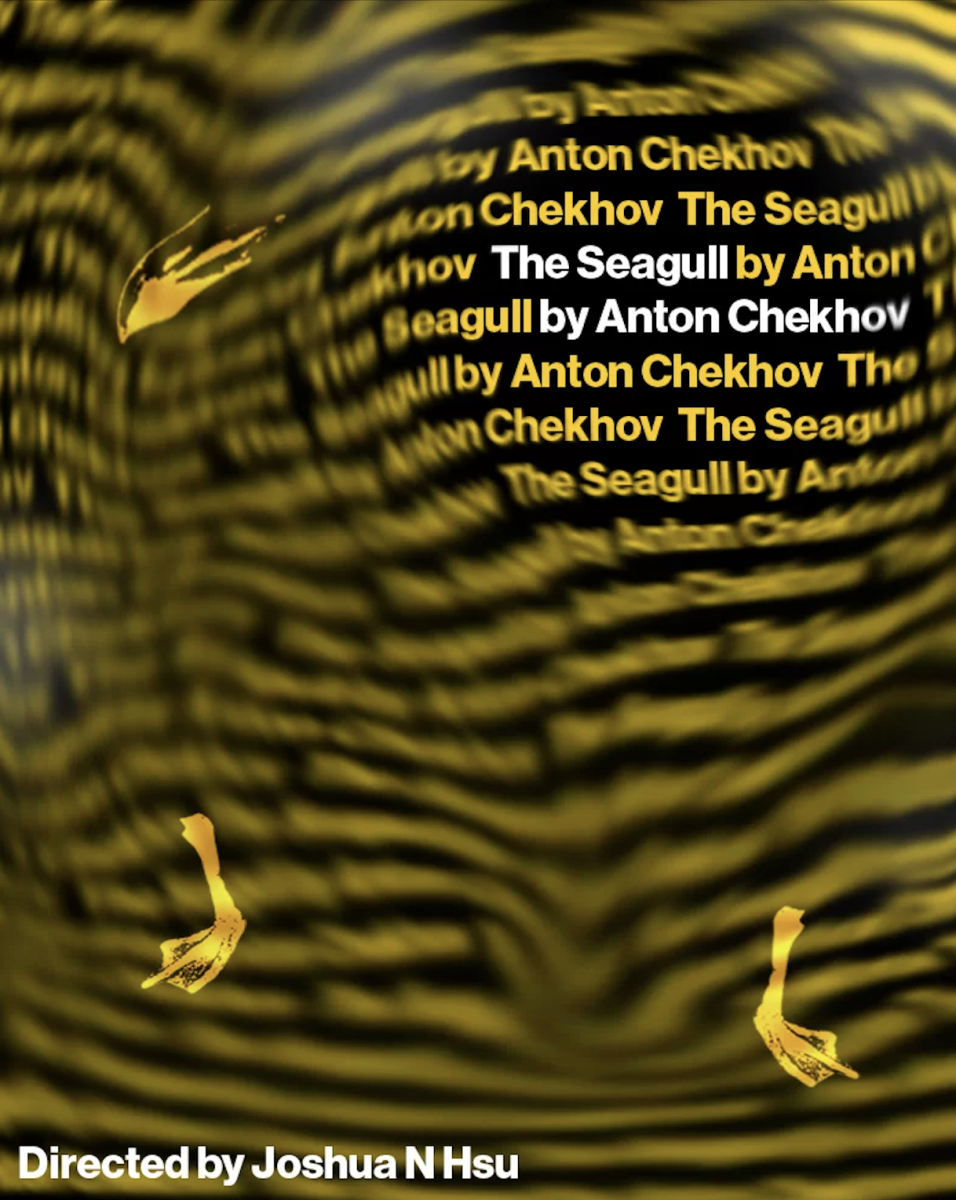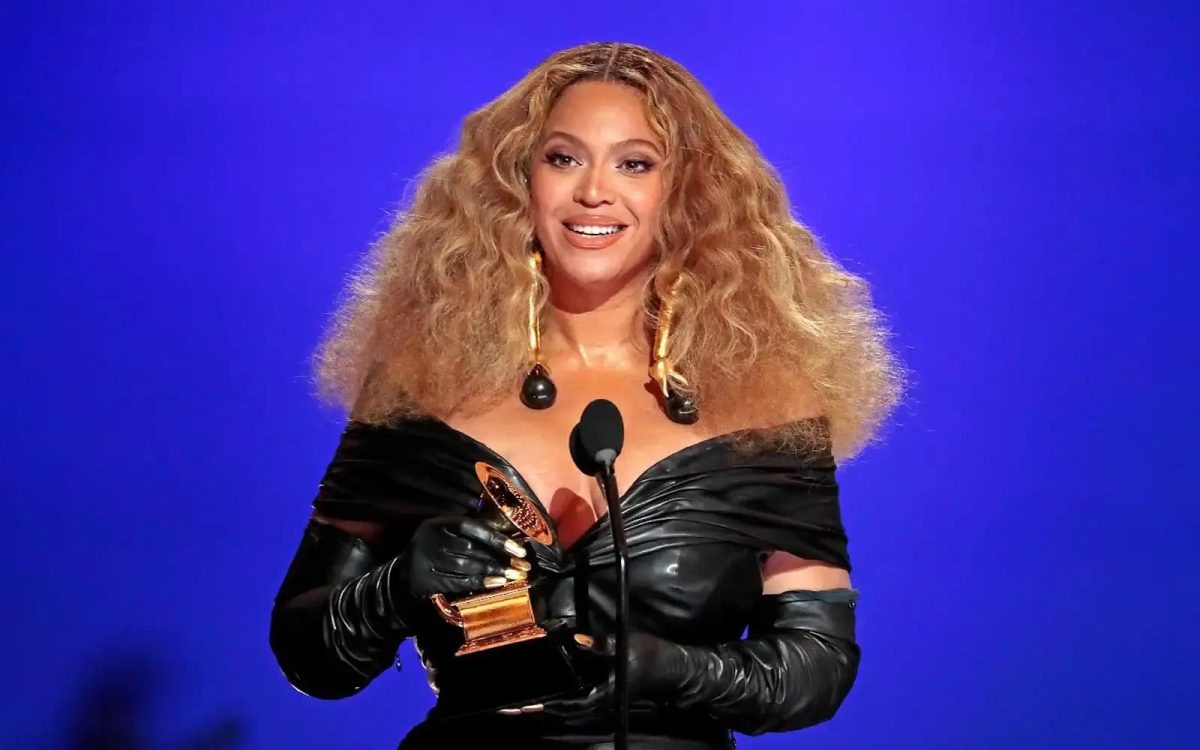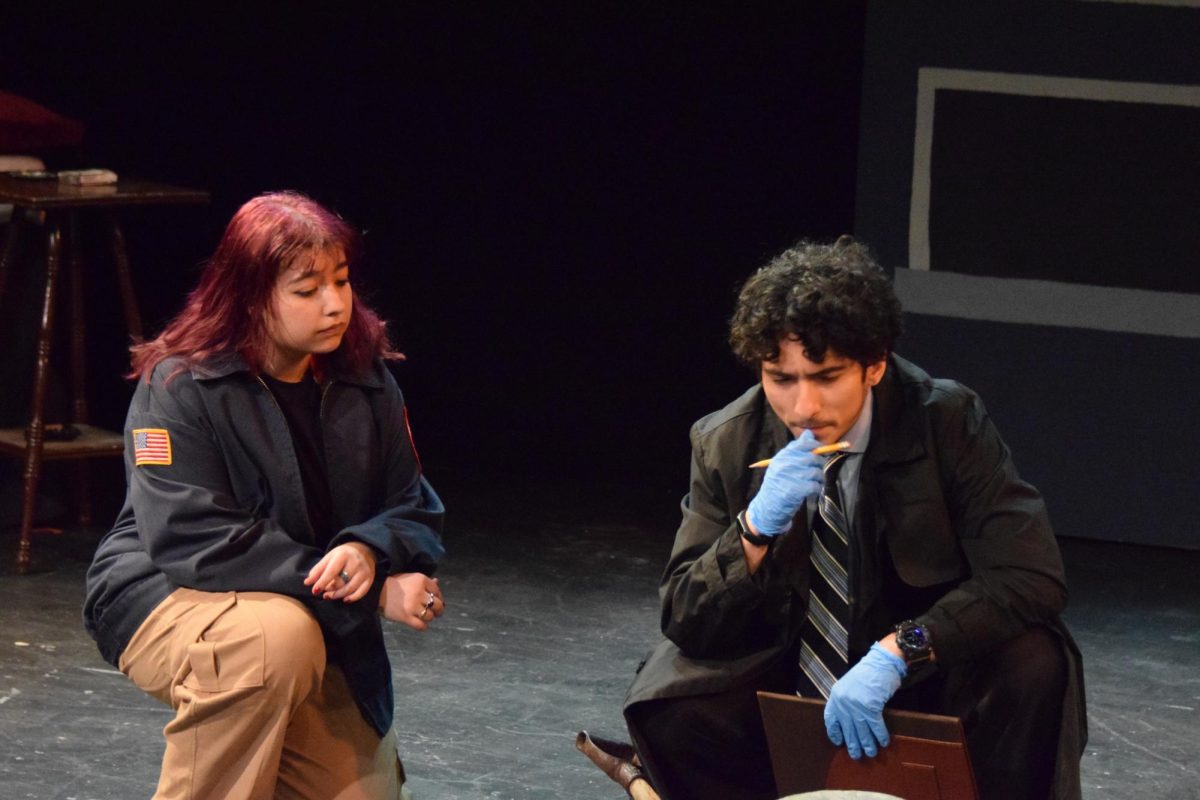We Are Proud to Present a Presentation About the Herero of Namibia, Formerly Known as Southwest Africa, From the German Sudwestafrika, Between the Years 1884–1915 written in 2012 by Jackie Sibblies Drury, is a difficult play to put on and perform. Its presentational, metatheatrical narrative accompanied by an ensemble dynamic creates a complex theatrical task for any director. The play itself is engaging, and provokes thought which might make audience members and readers feel uncomfortable. Under the direction of Timothy Dugan, Bates College Theater Department’s production does not shy away from the uncomfortable: it confronts the discomfort of the show and brings the audience along.
The objectives of the play itself are to ask questions and to start a conversation. The meta-play structure aims to inform the audience about the presence and history of the Herero Tribe of Namibia from 1884-1914, a period when the region in which they lived experienced changes under German colonial rule. The play showcases themes of ownership, colonization, leadership, hardships faced by the Herrero, and their genocide.
The history of the Herero Tribe is presented by a group of actors in a devised theater group. In this way, the play’s themes are paralleled by the leadership roles and power dynamic emerging in the group of actors and the adversities African Americans face today. Sibblies Drury’s cast of actors have good intentions but humanly falter in their pursuit of the best presentation they can put together.
In addition, concepts of process and presentation are dichotomized in order to manifest the journey an idea takes to reach its full formation in “We Are Proud to Present…” This dichotimization is magnified by the awareness the actors have of process and presentation. Throughout the course of the play, “Process” becomes presentational, and “Presentation” becomes infused with the frustration of the process until they become one.
I thought some elements of the production were executed well: the commitment of the actors, the use of lighting (designed by Michael Reidy), props to distinguish process and presentation, and the cast and crew’s ability to engage in conversation with the audience. Losseni Barry ‘22 brought out the truth, elicited all my sympathy, and rounded out the ensemble. Jack Willis ‘19 found moments of comedy yet remained present in sincerity and the action on stage. Michael Driscal’s ‘19 performance was perhaps the highlight of the show. Driscal’s “Black Man” solidified the relationships on stage and allowed the audience be morally present because of his ability to fully manifest the action on stage as truth and reality, and not as stereotype.
The actors preparing on stage before the play began, and the directorial execution of the end of play did not sit well with me. With regard to the former directorial choice, the cast’s informal presence on stage before the show suggested that the theater group was going to be more friendly and less invested in the presentation than they actually were because of their informal behavior. Although this created a welcoming atmosphere, I read it as inauthentic and somewhat cartoon-like (though this wasn’t the fault of the actors themselves).
At the end of the play, Dugan chose not to include an important stage direction by Drury. The stage direction calls for the white actors to potentially laugh. When I asked Dugan why he excluded Drury’s final direction, he said that he choose instead to give the actors “latitude to be in the moment” based on the feeling in the audience each night of the performance. I felt that Dugan’s choice excluded the concept of whiteness as a propelling factor of anti-blackness in the play. In my view, laughter acknowledges the roles the white actors play as white actors portraying German colonizers.
Dugan wanted the audience to have agency as they watched the show. He explained that he worked to make the process scenes easy, loose, and natural, while working to make presentation scenes stylistic, robust, and aware of speciation. I thought this diferentiation was done well. Dugan’s research process included looking into devised theater, interviews with the playwright, and primary documents.
When speaking with Professor of Rhetoric and African American Studies Charles Nero about his thoughts and reactions to the play, he said that “whiteness as an identity only exists within the context of anti-blackness.” Upon reflection, I believe this motif should have been acknowledged more during Dugan’s production.
WAPTP… is a play which elicits many conflicting emotions in its viewers. It asks us to confront history, the present, and how we can move forward. We must ask ourselves questions: How do we move forward? How do we grapple with the past? Can we tell someone else’s story and do it justice? Who takes accountability for privilege? It is necessary that we are uncomfortable in a space together in order to move forward. Dugan’s production gave us that opportunity.







